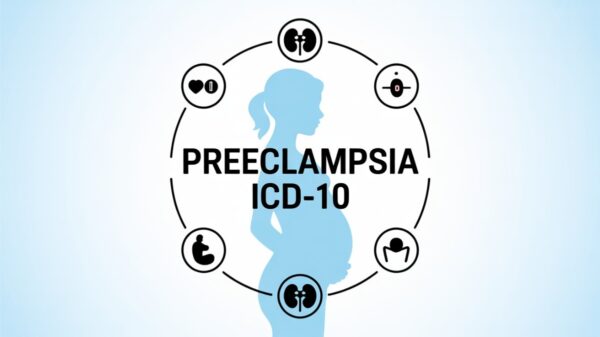Pregnancy is a unique journey, and no two experiences are the same. However, one of the most significant distinctions is whether an expectant mother carries a single baby (singleton pregnancy) or twins. While the core symptoms of pregnancy remain similar, twin pregnancies often come with heightened experiences due to increased hormone levels, rapid uterine growth, and a greater nutritional demand. Understanding the Difference Between Single and Twin Pregnancy Symptoms can help expectant mothers prepare for the journey ahead.
Understanding the Basics: Single vs. Twin Pregnancy
A singleton pregnancy occurs when one fertilized egg develops into a single baby. In contrast, a twin pregnancy can result from either a single fertilized egg splitting into two (identical twins) or two separate eggs being fertilized (fraternal twins). Since twin pregnancies involve two growing fetuses, the body undergoes additional physiological changes, leading to more pronounced symptoms.
Key Difference Between Single and Twin Pregnancy Symptoms

1. Severity of Morning Sickness
Morning sickness is one of the earlier pregnancy symptoms caused by rising hormone levels. In singleton pregnancies, nausea and vomiting may be mild to moderate. However, in twin pregnancies, morning sickness tends to be more intense due to higher levels of human chorionic gonadotropin (hCG). Expecting mothers carrying twins often experience more frequent nausea and may even require medical intervention if symptoms become severe.
2. Weight Gain and Appetite Changes
Weight gain is a genuine part of pregnancy, but the amount varies depending on whether a mother carries one or two babies. For singleton pregnancies, weight gain should range between 25 and 35 pounds. In contrast, twin pregnancies typically require a weight gain of 35 to 45 pounds to support the additional growth. Due to increased nutritional demands, expectant mothers of twins may also experience heightened hunger and cravings.
3. Fatigue and Energy Levels
Fatigue is common in early pregnancy as the body adjusts to hormonal shifts. However, women carrying twins often experience extreme fatigue due to the extra effort required to nourish two growing babies. The body requires oxygen and nutrients to supply two fetuses, leading to quicker exhaustion and a greater need for rest.
4. Uterine Growth and Abdominal Size
A rapidly growing belly is one of the most visible signs of a twin pregnancy. The uterus expands faster to accommodate two babies, often making twin pregnancies noticeable earlier than singleton pregnancies. Many women carrying twins find that they “show” much sooner, sometimes as early as the first trimester.
5. More Pronounced Fetal Movements
Fetal movements begin around the same time for singleton and twin pregnancies, typically between 18 and 22 weeks. However, mothers expecting twins often feel movement more frequently in multiple areas of the abdomen. This is because two babies occupy the space, making their movements more noticeable.
6. Shortness of Breath and Increased Heart Rate
Breathing difficulties and an elevated heart rate are common in pregnancy due to increased blood circulation. In twin pregnancies, the heart works even harder to supply oxygen to both babies, leading to higher heart rates and more pronounced shortness of breath, especially in the last stages of pregnancy.
7. Risk of Pregnancy Complications
Twin pregnancies arrive with an increased risk of complications compared to single pregnancies. Some potential risks include:
- Gestational Diabetes: A higher likelihood of developing this condition due to increased insulin resistance.
- Preeclampsia: Elevated blood pressure, which is more common in twin pregnancies.
- Preterm Birth: Most twins are born earlier than single babies, often before 37 weeks.
- Twin-to-Twin Transfusion Syndrome (TTTS): A rare but serious condition that occurs in exact twin pregnancies when one twin accepts more blood flow than the other.
Regular prenatal care is essential for watching these risks and ensuring the health of both mother and babies.
Coping with the Challenges of Twin Pregnancy

While twin pregnancies come with added challenges, proper care and lifestyle adjustments can support manage symptoms effectively:
- Maintain a Balanced Diet: Eating nutrient-dense foods rich in protein, iron, and folic acid supports healthy fetal development.
- Stay Hydrated: Drinking water helps prevent dehydration and supports circulation.
- Prioritize Rest: Given the increased fatigue, napping and avoiding overexertion is crucial.
- Regular Prenatal Check-Ups: More frequent doctor visits help monitor fetal growth and detect potential complications early.
- Support System: Emotional and physical help from family, friends, and healthcare specialists can make the journey smoother.
Conclusion
Understanding the Difference Between Single and Twin Pregnancy Symptoms can help expectant mothers prepare for the journey ahead. While twin pregnancies often involve more intense symptoms and higher risks, proper medical care and lifestyle adjustments can contribute to a healthy pregnancy. Whether carrying one baby or two, the key to a smooth pregnancy is regular prenatal care, a well-balanced diet, and adequate rest. If you suspect you might be carrying twins, consult with your healthcare provider for an ultrasound and personalized guidance on managing your pregnancy.











